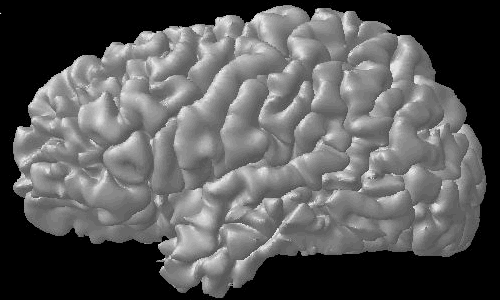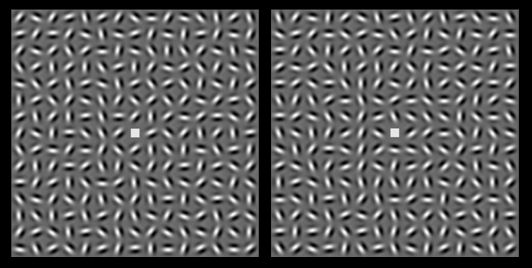
Early Visual Processing in Schizophrenia
Deficits in visual perception are interesting because they provide insight into neural mechanisms underlying cognitive deficits. This project is focused on understanding how the visual system is affected by schizophrenia. This psychiatric disorder is known to cause visual processing abnormalities, and many subjects experience visual hallucinations. Competing hypotheses about the neural correlates for this disease include the GABA hypothesis, which suggests a malfunction in inhibition may be to blame. However, it is not yet understood how a malfunctioning neurotransmitter system, such as deficient GABAergic inhibition, could affect information processing in the visual system at the neural level. Our lab is interested in studying how this disorder can affect early visual processing mechanisms such as surround suppression and orientation tuning. We will use psychophysical tasks, neuroimaging techniques (fMRI and EEG) and computational modeling to understand how these mechanisms may be altered by this disorder.
To study the effect of schizophrenia on long-range neural mechanisms that extend beyond the canonical receptive field, we are investigating deficits in the orientation selective surround suppression effect. This visual processing mechanism suppresses the perceived contrast of a central target when surrounded by a higher contrast annulus of the same orientation. This suppression effect is not observed when the annulus grating is oriented 90 degrees orthogonal to the target (compare A and B in the image below). In a two alternate forced choice paradigm, subjects are asked to compare the contrast of the target within the surrounding annulus to one without a surround. When both targets are the same contrast, healthy adults perceive the target surrounded by the annulus as being lower contrast by comparison than the other target. This effect is significantly diminished in subjects with schizophrenia. We are interested in studying the neural correlates of this surround suppression effect, and how they may be understood in the context of the GABA hypothesis.

A different inhibitory mechanism, operating over a smaller spatial scale (within a neuron’s receptive field), shapes the orientation tuning of neurons in early visual cortex, and has yet to be investigated in depth in subjects with schizophrenia. Neurons in early visual areas are tuned to specific preferred orientations, for which they fire at a maximum rate. These neurons show the lowest firing rate in response to stimuli that are approximately 40 degrees off of their preferred orientation, and this is due to localized lateral inhibition in the orientation domain. This effect has been studied extensively using electrophysiology in primates, and can also be observed using psychophysical techniques. By rapidly presenting randomly oriented stimuli (see an example here) and asking a subject to indicate when a target orientation is seen, a response profile similar to individual V1 neurons tuned to the target orientation can be observed. In this way we are able to estimate orientation tuning in humans, and this can serve as an indicator of the strength of short range inhibition in early visual areas. Therefore, as GABAergic inhibition may be impaired in schizophrenia, we are interested in studying how orientation tuning may be altered by this disorder, and whether short- and long-range inhibitory mechanisms may be differentially affected.
Finally, we are also interested in studying collinearity detection in subjects with schizophrenia, as this visual processing mechanism involves both facilitation from aligned collinear elements, and inhibition from flanking elements in the scene. This flanking inhibition is orientation selective, allowing us to study contextual modulation by manipulating the orientation of flanking elements. Therefore, we are using an experimental paradigm developed in our lab (manuscript can be found here) to investigate possible differences in contextual modulation during contour detection between subjects with schizophrenia and healthy controls. Two examples of the stimuli we are using can be found below. Preliminary results indicate that contextual modulation is weaker in subjects with schizophrenia during conditions when suppression is strongest.

home
people
projects
publications
tutorials & data
hall of shame